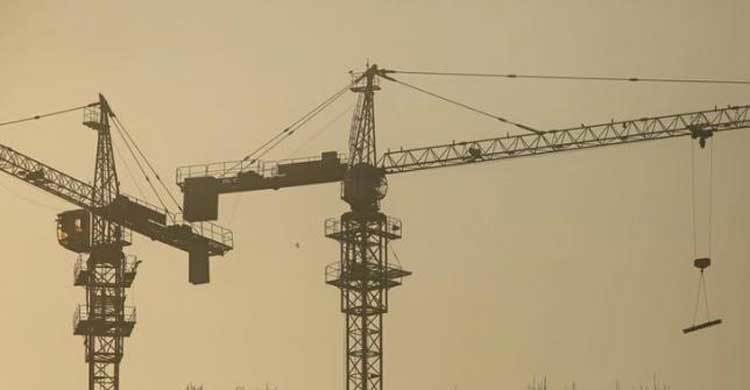Surging growth helps India retain fastest growing economy tag

India gathered momentum from January to March to extend its lead as the world’s fastest growing large economy, helping Prime Minister Narendra Modi craft an impressive sales pitch for meetings with investors in the United States next week.
Having swept to power two years ago promising to revitalise Asia’s third-largest economy, Modi has boosted spending on defence and infrastructure, while consumer demand has risen thanks to lower interest rates.
Those pro-growth policies helped gross domestic product grow a faster-than-expected 7.9 percent year-on-year in the March quarter, faster than the December quarter’s 7.2 percent.
‘Momentum is building up faster than anticipated and there is a demand pick-up on the horizon,’ said Shubhada Rao, chief economist at Yes Bank.
India’s growth has overtaken that of fellow Asian giant China, which grew 6.7 percent in the March quarter - the slowest in the world’s second largest economy in seven years.
The figures from India’s Statistics office also showed GDP grew 7.6 percent in the 2015/16 fiscal year that ended in March, faster than a 7.2 percent growth in the previous year.
The strong headline number in the quarter was mainly driven by strong consumer spending. An upturn in private capital investment, which has been dormant for the past four years, remained elusive.
Modi has tried to stimulate corporate capital spending through debt-fuelled higher public spending. Still, capital investment fell an annual 1.9 percent compared with a 1.2 percent growth in the December quarter.
Saddled with idle capacity and stretched balance sheets, companies are in no hurry to make new investments. Festering bad loans, which have made banks wary of fresh lending, have only worsened India`s investment crisis.
‘Private capex will likely remain the missing link for a few more quarters with growth continuing to be heavily reliant on government spending,’ said Upasna Bhardwaj, an economist at Kotak Mahindra Bank.
Nonetheless, the GDP figures will be compelling numbers with which to promote India when Modi meets the heads of top U.S. companies in Washington on June 7-8.
IMBALANCES
Consumer spending was up 8.3 percent on year in the March quarter. With impending increases in wages and pensions of government employees set to further fuel consumer spending, India`s growth mix looks potentially inflationary.
Success in bringing down inflation has given the Reserve Bank of India (RBI) room to cut its policy repo rate by 150 basis points since January 2015, reducing it to 6.50 percent - the lowest level in more than five years.
The central bank has set a target to cool inflation to 5 percent by March 2017 and to 4.2 percent by March 2018.
The GDP data reinforced expectations that the RBI would keep its policy rate on hold at a review next Tuesday.
‘Given that the RBI faces a tough challenge in meeting its inflation target ... we think that it will keep the repo rate on hold,’ said Shilan Shah, an economist with Capital Economics.
Growth in the March quarter was driven by a rebound in farm output, an improvement in mining and a sharp pickup in electricity production.
The farm sector grew by 2.3 percent from a year ago compared with a 1.0 percent contraction in the December quarter.
With good rain forecast, after two successive years of drought, farm sector output should improve in the coming months and lift depressed demand in the countryside where two thirds of Indians live.
Millions of farmers plant rice, cane, corn, cotton and soybean crops in the rainy months of June and July. Harvesting starts from October.
‘Agriculture, no doubt, will have some positive impact from the third quarter onward,’ said Devendra Kumar Pant, chief economist at India Ratings and Research.
‘(But) until and unless investment story evolves, the stability to growth will be a challenge.’


